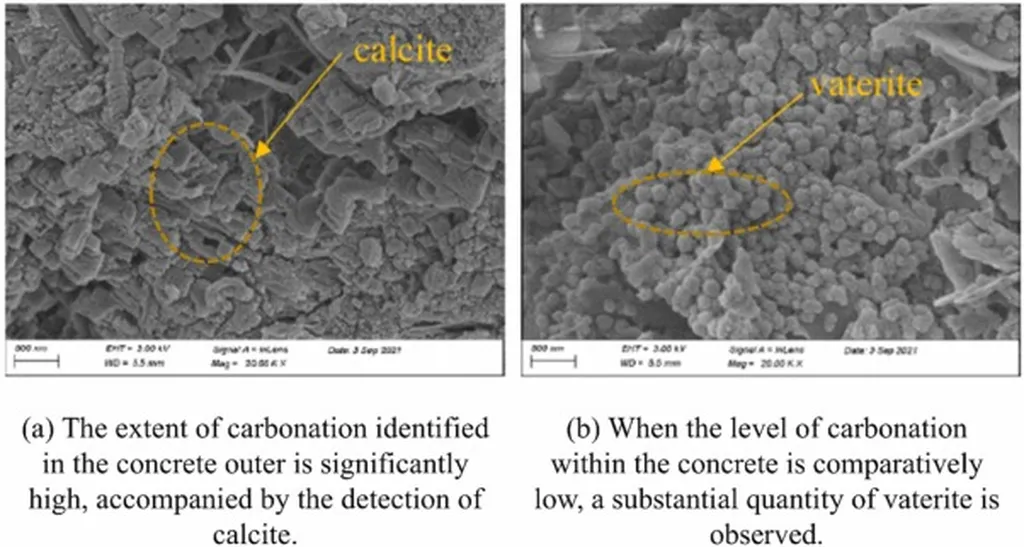In the relentless pursuit of sustainable construction, a groundbreaking study has emerged, offering a promising solution to one of the industry’s most persistent challenges: crack formation in reinforced concrete structures. Led by Rasha A. El-Sadany of the Radiation Engineering Department at the National Center for Radiation Research and Technology, part of the Egyptian Atomic Energy Authority, this research delves into the synergistic effects of pozzolanic materials and encapsulated healing agents, paving the way for autonomous self-healing concrete.
The study, published in the esteemed journal Scientific Reports, systematically investigates the use of silica fume (SF) and marble powder (MP) as pozzolanic additives, combined with an encapsulated system of expansive minerals, to enhance the autonomous repair capability of sustainable concrete beams under flexural loading. The results are nothing short of remarkable, with SF demonstrating superior pozzolanic and healing performance, achieving an impressive 87.5% crack sealing and 20% load recovery.
El-Sadany explains, “The use of silica fume in our study significantly increased the pozzolanic activity and CSH production, leading to enhanced matrix densification, CH reduction, and interfacial refinement.” This finding underscores the vital role of SF in developing effective self-healing mortar systems, offering a substantial leap forward in the quest for durable, sustainable concrete structures.
The implications of this research for the energy sector are profound. Concrete is a ubiquitous material in energy infrastructure, from power plants to renewable energy facilities. The ability to autonomously heal cracks not only extends the service life of these structures but also enhances their safety and reliability, reducing maintenance costs and minimizing downtime.
Moreover, the study’s advanced microstructure characterization techniques, including SEM–EDS, XRD, and FT-IR, provide a comprehensive, multiscale analysis of healing products and matrix-capsule interfaces. This level of detail offers invaluable insights into the healing mechanisms, enabling the development of more targeted and effective self-healing technologies.
As the construction industry continues to grapple with the challenges of sustainability and durability, this research offers a beacon of hope. By harnessing the power of pozzolanic materials and encapsulated healing agents, we can create concrete structures that are not only stronger and more resilient but also more environmentally friendly.
In the words of El-Sadany, “This work contributes to the development of autonomous self-healing technology, providing concrete with an extended service life for sustainable construction applications.” The future of construction is here, and it is self-healing.

